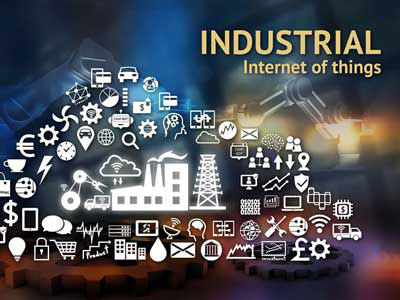How Do IIoT Devices Communicate Within Industrial Automation Networks?
Key Takeaway
Industrial Internet of Things (IIoT) devices communicate within industrial automation networks using various methods and protocols. Common communication protocols include EtherNet/IP, Profinet, and EtherCAT, which allow seamless data exchange between devices. Wireless networks like Wi-Fi and Bluetooth facilitate communication without physical connections. IoT gateways act as central hubs, collecting and transmitting data from multiple devices to a central system.
Edge devices process data locally before sending it to the cloud for further analysis, ensuring quick responses and reduced latency. Key factors in IIoT communication are power consumption and bandwidth efficiency, with lightweight protocols like Zigbee and Bluetooth being ideal for battery-operated devices. IIoT enhances process optimization, enables data-driven decisions, and supports predictive maintenance.
Overview of Communication Protocols Used in IIoT
Industrial Internet of Things (IIoT) devices rely on various communication protocols to interact seamlessly within industrial automation networks. These protocols ensure that data flows efficiently and securely between devices, systems, and cloud platforms. Common protocols include MQTT (Message Queuing Telemetry Transport), CoAP (Constrained Application Protocol), and Industrial Ethernet. Each protocol has its unique advantages and is selected based on the specific needs of the application. Understanding these protocols is essential for engineers to design effective IIoT solutions that enhance productivity and reliability.

Role of MQTT and CoAP in IIoT Connectivity
MQTT and CoAP are essential protocols in the Industrial Internet of Things (IIoT) for their efficiency and reliability in constrained environments. MQTT (Message Queuing Telemetry Transport) is a lightweight messaging protocol designed for high-latency and unreliable networks, making it ideal for remote monitoring and control. It operates on a publish-subscribe model, which allows devices to send data to a broker, and other devices can subscribe to this broker to receive the data. This model ensures efficient data transfer with minimal bandwidth usage, which is crucial in IIoT applications where network resources may be limited.
On the other hand, CoAP (Constrained Application Protocol) is optimized for constrained devices and networks. It uses a client-server model similar to HTTP but with significantly lower overhead, making it suitable for applications where battery life and bandwidth are critical factors. CoAP enables devices to request data from servers or push data to them, facilitating efficient and low-power communication.
Engineers must understand the strengths of both MQTT and CoAP to implement robust IIoT systems. While MQTT excels in scenarios requiring efficient, scalable data distribution, CoAP is better suited for direct device-to-device communication in resource-constrained environments. Mastery of these protocols will enable the development of resilient and effective IIoT solutions that meet the demands of various industrial applications.
Benefits of Using Industrial Ethernet
Industrial Ethernet is fundamental to modern IIoT applications, offering high-speed, reliable communication essential for real-time data exchange in automation and control processes. Its robust infrastructure handles large data volumes, seamlessly integrating with existing IT systems, ensuring smooth data flow between shop floors and enterprise systems. Supporting various industrial protocols like EtherNet/IP, PROFINET, and Modbus TCP, it enhances interoperability and flexibility. For engineers, leveraging Industrial Ethernet ensures the scalability, resilience, and efficiency of IIoT deployments, making it a critical component for future-ready industrial networks.
Challenges in IIoT Communication and Solutions
IIoT communication faces challenges like network latency, data integrity, and cybersecurity threats. High latency can disrupt real-time operations, affecting system responsiveness. Data integrity issues can lead to inaccurate analysis and faulty decision-making, compromising operational efficiency. Cybersecurity threats pose risks to sensitive data and overall operational continuity. Solutions include implementing edge computing to reduce latency, ensuring robust encryption and authentication protocols to protect data, and conducting regular network assessments to identify and mitigate vulnerabilities. Engineers must proactively address these challenges to maintain the reliability and security of IIoT networks, ensuring smooth and efficient operations.
The Future of IIoT Networking and Communication Technologies
The future of IIoT networking is set to be transformed by emerging technologies like 5G, artificial intelligence (AI), and blockchain. 5G technology promises ultra-low latency and high bandwidth, enabling more responsive and interconnected IIoT systems. This will allow for real-time data processing and faster decision-making. AI will enhance predictive maintenance and process optimization by analyzing vast amounts of data in real-time, offering deeper insights and more accurate predictions. Blockchain technology can provide secure, transparent, and tamper-proof data transactions, addressing major cybersecurity concerns. Engineers must stay informed about these trends to develop future-proof IIoT solutions that leverage the latest technological innovations.
Conclusion
Effective communication is the backbone of successful IIoT integration in industrial automation networks. By understanding and implementing the right communication protocols, such as MQTT, CoAP, and Industrial Ethernet, and addressing challenges like latency, data integrity, and cybersecurity, engineers can ensure robust and efficient IIoT deployments. Staying abreast of future trends and advancements will further optimize IIoT systems, driving innovation and operational excellence. By focusing on these aspects, businesses can harness the full potential of IIoT to achieve greater efficiency, productivity, and competitiveness in the industrial sector.
